Inbox and Environment News: Issue 374
September 2 - 8, 2018: Issue 374
First Day Of Spring 2018
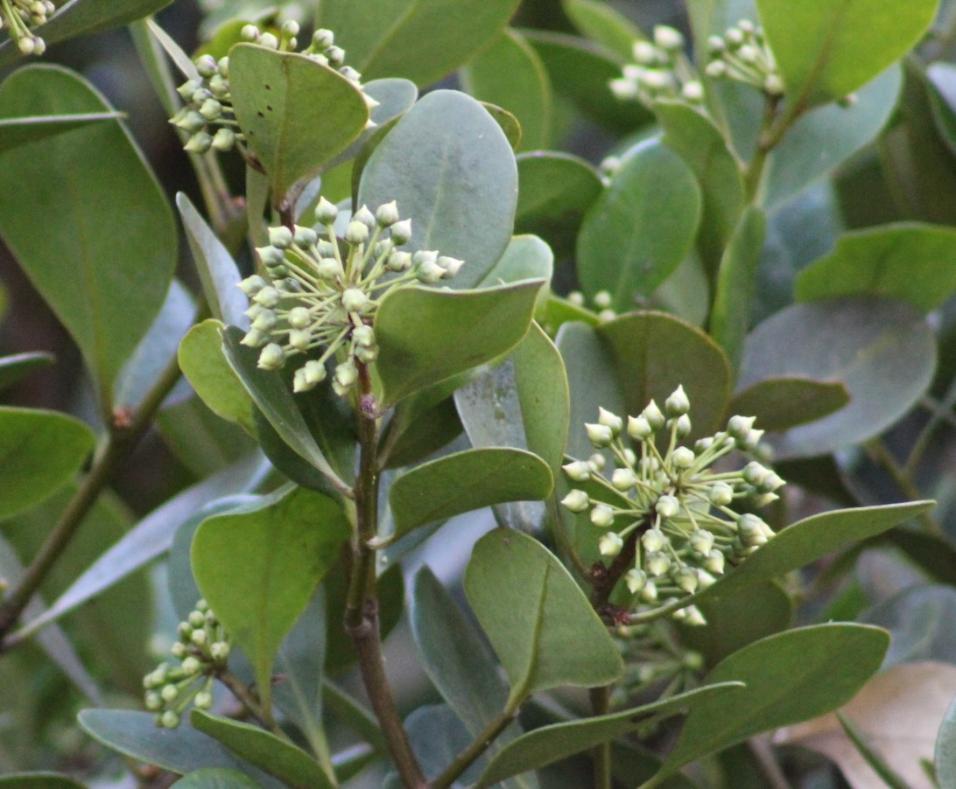
Mangroves are in bud

Mangroves are in bud
Before And After Photos; Rural NSW
Pittwater Online News is fortunate to have a readership that not only stretches across the globe it also stretches across Australia. Many of these are people who once resided here and help out with brilliant insights - Ron Turton and Ken 'Sava' Lloyd instantly spring to mind.
In recent weeks we've asked our Roving Rural Reporters on the Rampage to send in a few photos of how things are where they are.
From Ron:
To give you an idea of how bad this ongoing drought is have a look at these before and after pics I took at one of my favourite fishing holes on the Mehi River west of Moree.
Ron Turton
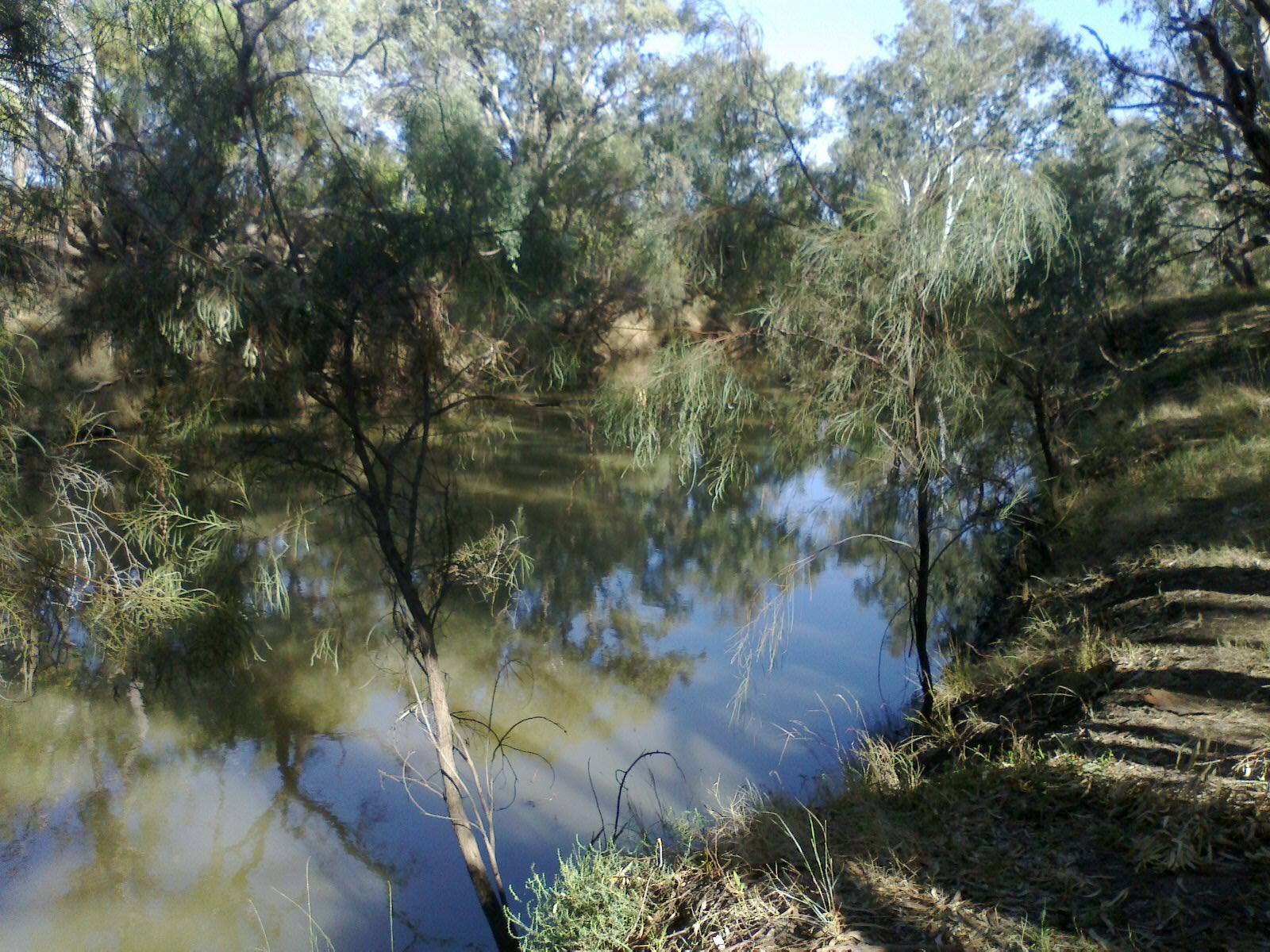
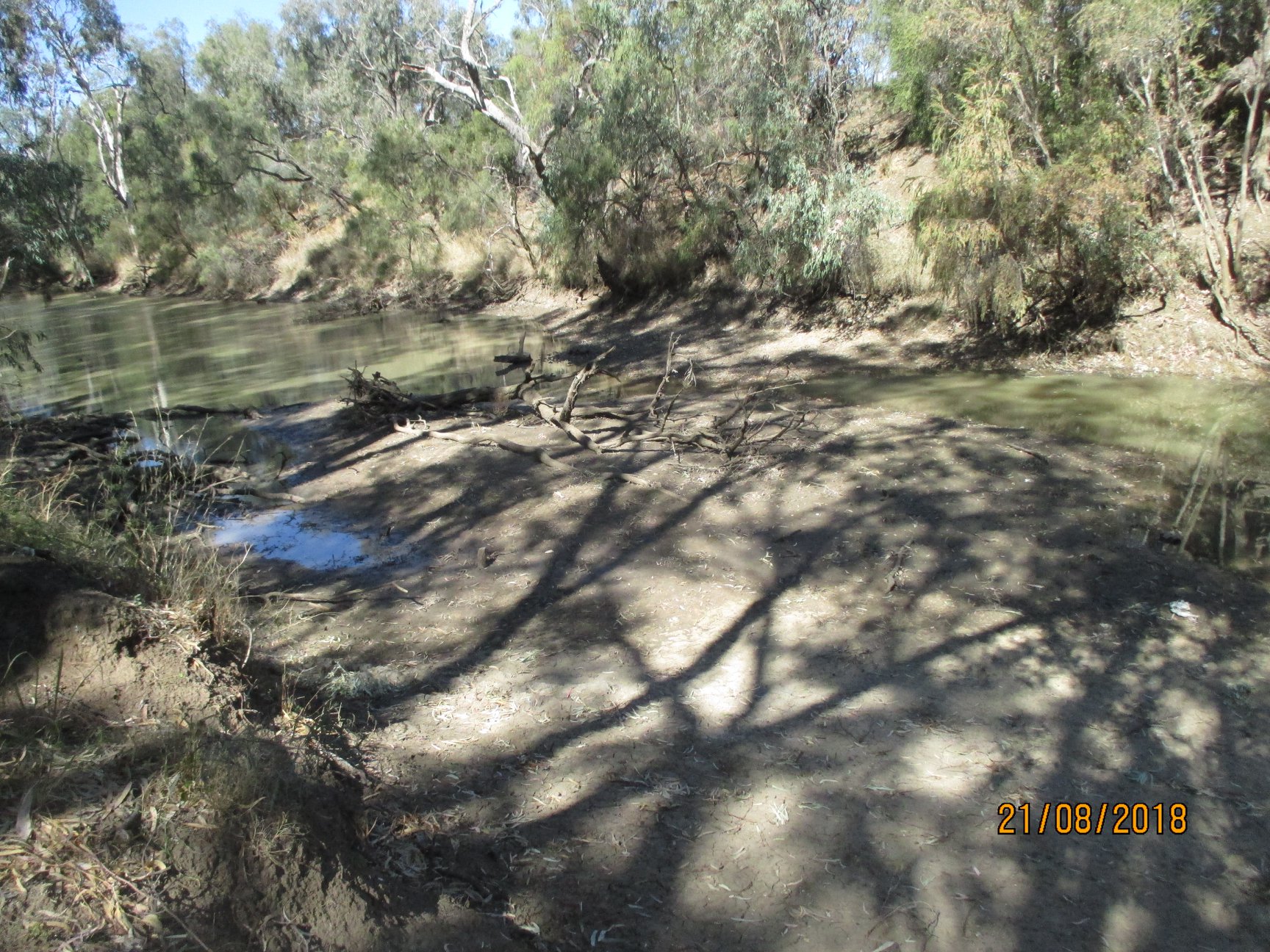
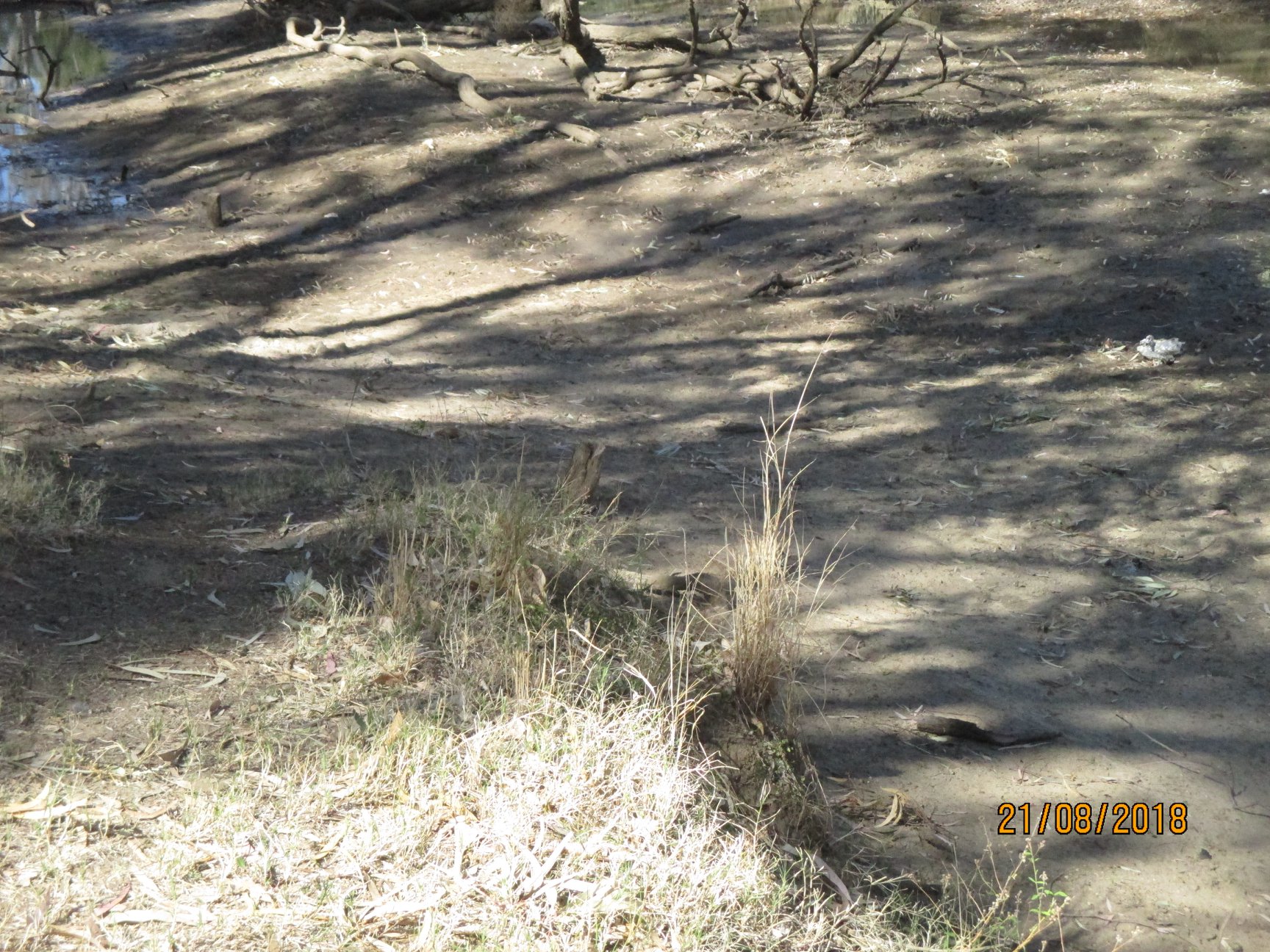
Of course a sprinkling of rain brings relief and more brings birds singing.
From Sava:
At last we have had rain my Magpies are now finding their own food: 31mls - Also some Blue Faced Honeyeaters:
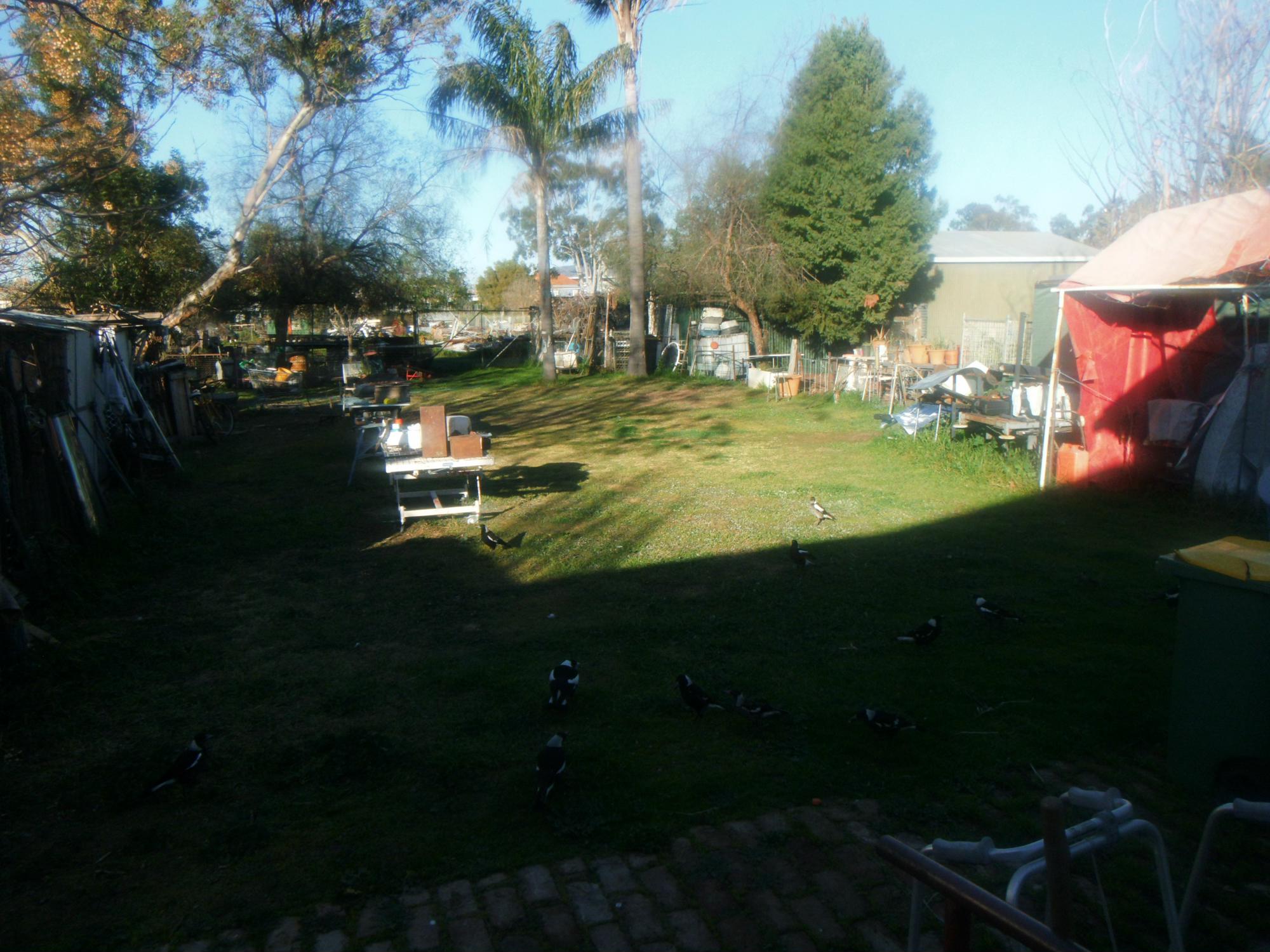
savas.JPG?timestamp=1535844536847)
In recent weeks we've asked our Roving Rural Reporters on the Rampage to send in a few photos of how things are where they are.
From Ron:
To give you an idea of how bad this ongoing drought is have a look at these before and after pics I took at one of my favourite fishing holes on the Mehi River west of Moree.
Ron Turton



Of course a sprinkling of rain brings relief and more brings birds singing.
From Sava:
At last we have had rain my Magpies are now finding their own food: 31mls - Also some Blue Faced Honeyeaters:
Wilder Wildfires Ahead?
August 28, 2018: University of California - Santa Barbara
At roughly 415,000 acres, Northern California's Mendocino Complex Fire is now the state's largest recorded wildfire, surpassing the record held by Santa Barbara and Ventura counties' Thomas Fire, which occurred less than a year before. Roughly 10 other large-scale conflagrations are threatening the state. And California is not yet even at the height of its wildfire season.
The trend of growing intensity and extremity of recent wildfires has triggered new research by scientists at UC Santa Barbara's Bren School of Environmental Science & Management and at the National Center for Atmospheric Research. Their question: How is one of our most significant climate patterns -- the El Niño/Southern Oscillation (ENSO) -- being affected by a warming Earth and how, in turn, is that pattern affecting the likelihood and intensity of future wildfires? Their findings could have implications on land use and on wildfire fighting and prevention strategies at urban/wildland interfaces.
Their study, "ENSO's Changing Influence on Temperature, Precipitation and Wildfire in a Warming Climate," has been published in the American Geophysical Union journal Geophysical Research Letters.
"This paper is really saying that in fire-prone places like California and Australia, we can expect future El Niño and La Niña events to have a bigger impact on fire risk in a given year," said Samantha Stevenson, a faculty member with the Bren School and a co-author on the paper. "That's because the sensitivity of land temperature and precipitation to changes in tropical Pacific Ocean temperature is increasing due to climate change."
Like many climate-based events, which take place over long timescales, tracking the ripple effects of a climate pattern can be difficult, given the many individual processes that can affect the result. ENSO -- the collective name for the ocean-warming El Niño weather pattern and its complementary ocean-cooling La Niña pattern -- has particularly complex and extreme teleconnections. It drives drought in some places while promoting fertile vegetation in others. Food sources may dwindle in some regions, while fresh water supplies may be built in others. In the process, human populations and their supports -- such as agricultural production, energy use and fire prevention -- are affected.
The researchers used large "ensemble" sets of climate simulations, projecting future climate under a business-as-usual climate scenario assuming no major efforts to combat climate change. They then examined changes in the sensitivities of regional climate to ENSO-related sea surface temperature anomalies between the historical period and the late 21st century. In addition to looking at changes in ENSO-driven temperature and rainfall patterns, one of the climate models (the Community Earth System Model, or CESM) includes a wildfire scheme that simulates the risk of fire activity based on factors such as soil moisture, fuel load and applied statistical relationships between fire season length and burned area to simulate fire activity. All of the quantities the researchers examined showed an increase in the future effects of El Niño and La Niña events -- in other words, we can expect a larger ENSO-driven "bang for your buck" in the future.
"Typically what happens during an El Niño or La Niña event is you get changing atmospheric circulation patterns," Stevenson explained. These changes in atmospheric circulation patterns, which originate in the ocean as rising or falling sea surface temperatures, in turn can cause shifts in things like wind patterns, cloud cover, atmospheric temperature and precipitation, which then affect conditions on land. According to the researchers, these impacts will be intensifying in the future as the Earth warms.
"Future ENSO is having a larger impact on the land surface since the Earth is warming -- and it's easier for land to warm than the ocean in general, because it has a lower heat capacity -- so the land is going to be evaporating more moisture," Stevenson said. Add an El Niño event on top of that, she added, and the level of evaporation will increase. With drier soils and fuels, the likelihood and intensity of wildfires are also bound to increase.
Climate scientists still aren't sure how strong El Niño and La Niña events themselves will actually be in the future, Stevenson stressed, but what they do agree on is that events of a given magnitude will cause larger impacts to wildfire risks as the Earth warms, worsening fires in areas that already experience them, and creating conditions for them where they aren't currently a big risk. Finding these pieces of the puzzle will be critical for future studies and wildfire fighting strategies, she said.
"To me this just really highlights the importance of getting future projections of El Niño impacts and magnitudes correct," Stevenson said.
The study is funded by National Science Foundation and the U.S. Department of Energy. The study was led by NCAR scientist John Fasullo and co-authored by Bette Otto-Bliesner, also of NCAR.
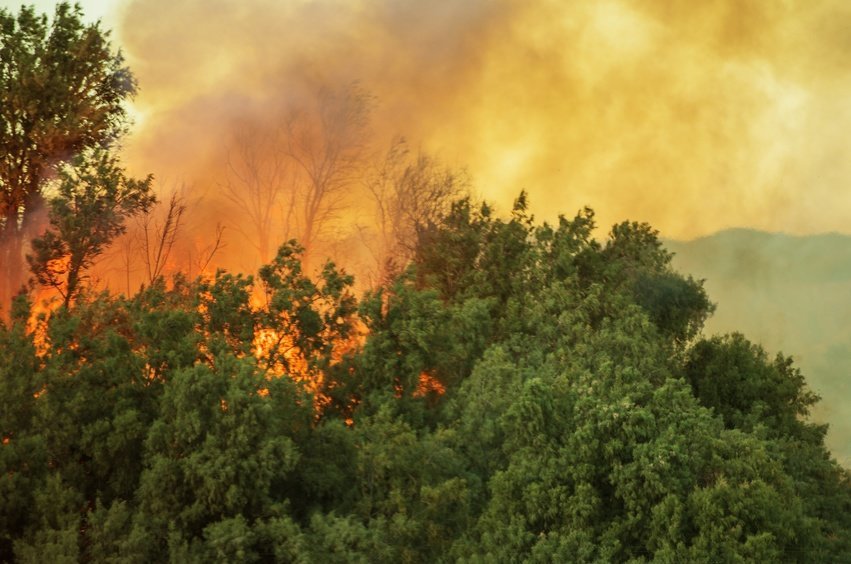
Wildfire. Credit: © Tomasz Zajda / Fotolia
J. T. Fasullo, B. L. Otto-Bliesner, S. Stevenson. ENSO's Changing Influence on Temperature, Precipitation, and Wildfire In a Warming Climate. Geophysical Research Letters, 2018; DOI: 10.1029/2018GL079022
August 28, 2018: University of California - Santa Barbara
At roughly 415,000 acres, Northern California's Mendocino Complex Fire is now the state's largest recorded wildfire, surpassing the record held by Santa Barbara and Ventura counties' Thomas Fire, which occurred less than a year before. Roughly 10 other large-scale conflagrations are threatening the state. And California is not yet even at the height of its wildfire season.
The trend of growing intensity and extremity of recent wildfires has triggered new research by scientists at UC Santa Barbara's Bren School of Environmental Science & Management and at the National Center for Atmospheric Research. Their question: How is one of our most significant climate patterns -- the El Niño/Southern Oscillation (ENSO) -- being affected by a warming Earth and how, in turn, is that pattern affecting the likelihood and intensity of future wildfires? Their findings could have implications on land use and on wildfire fighting and prevention strategies at urban/wildland interfaces.
Their study, "ENSO's Changing Influence on Temperature, Precipitation and Wildfire in a Warming Climate," has been published in the American Geophysical Union journal Geophysical Research Letters.
"This paper is really saying that in fire-prone places like California and Australia, we can expect future El Niño and La Niña events to have a bigger impact on fire risk in a given year," said Samantha Stevenson, a faculty member with the Bren School and a co-author on the paper. "That's because the sensitivity of land temperature and precipitation to changes in tropical Pacific Ocean temperature is increasing due to climate change."
Like many climate-based events, which take place over long timescales, tracking the ripple effects of a climate pattern can be difficult, given the many individual processes that can affect the result. ENSO -- the collective name for the ocean-warming El Niño weather pattern and its complementary ocean-cooling La Niña pattern -- has particularly complex and extreme teleconnections. It drives drought in some places while promoting fertile vegetation in others. Food sources may dwindle in some regions, while fresh water supplies may be built in others. In the process, human populations and their supports -- such as agricultural production, energy use and fire prevention -- are affected.
The researchers used large "ensemble" sets of climate simulations, projecting future climate under a business-as-usual climate scenario assuming no major efforts to combat climate change. They then examined changes in the sensitivities of regional climate to ENSO-related sea surface temperature anomalies between the historical period and the late 21st century. In addition to looking at changes in ENSO-driven temperature and rainfall patterns, one of the climate models (the Community Earth System Model, or CESM) includes a wildfire scheme that simulates the risk of fire activity based on factors such as soil moisture, fuel load and applied statistical relationships between fire season length and burned area to simulate fire activity. All of the quantities the researchers examined showed an increase in the future effects of El Niño and La Niña events -- in other words, we can expect a larger ENSO-driven "bang for your buck" in the future.
"Typically what happens during an El Niño or La Niña event is you get changing atmospheric circulation patterns," Stevenson explained. These changes in atmospheric circulation patterns, which originate in the ocean as rising or falling sea surface temperatures, in turn can cause shifts in things like wind patterns, cloud cover, atmospheric temperature and precipitation, which then affect conditions on land. According to the researchers, these impacts will be intensifying in the future as the Earth warms.
"Future ENSO is having a larger impact on the land surface since the Earth is warming -- and it's easier for land to warm than the ocean in general, because it has a lower heat capacity -- so the land is going to be evaporating more moisture," Stevenson said. Add an El Niño event on top of that, she added, and the level of evaporation will increase. With drier soils and fuels, the likelihood and intensity of wildfires are also bound to increase.
Climate scientists still aren't sure how strong El Niño and La Niña events themselves will actually be in the future, Stevenson stressed, but what they do agree on is that events of a given magnitude will cause larger impacts to wildfire risks as the Earth warms, worsening fires in areas that already experience them, and creating conditions for them where they aren't currently a big risk. Finding these pieces of the puzzle will be critical for future studies and wildfire fighting strategies, she said.
"To me this just really highlights the importance of getting future projections of El Niño impacts and magnitudes correct," Stevenson said.
The study is funded by National Science Foundation and the U.S. Department of Energy. The study was led by NCAR scientist John Fasullo and co-authored by Bette Otto-Bliesner, also of NCAR.

Wildfire. Credit: © Tomasz Zajda / Fotolia
J. T. Fasullo, B. L. Otto-Bliesner, S. Stevenson. ENSO's Changing Influence on Temperature, Precipitation, and Wildfire In a Warming Climate. Geophysical Research Letters, 2018; DOI: 10.1029/2018GL079022
New Zealand Penguins Make Mammoth Migrations, Travelling Thousands Of Kilometres To Feed
August 29, 2018
Fiordland penguins, Eudyptes pachyrhynchus, known as Tawaki, migrate up to 2,500 km from their breeding site, according to a study publishing August 29 in the open-access journal PLOS ONE by Thomas Mattern of the University of Otago and colleagues.
Tawaki penguins migrate from their breeding sites on the west coast of New Zealand's South Island, where they feed at sea for several weeks to refuel after long periods of fasting on land while rearing chicks. To find out where the seabirds go, the authors attached satellite transmitters to 10 male and 7 female adult Tawaki penguins from November 2016 to March 2017, and compared the migration routes with published oceanographic data such as surface temperature and currents. Tags on nine birds continued emitting data up until they turned back for the return journey, and five were tracked for the entire migration.
They found that the penguins travelled between 3,500 and 6,800 km on their 69-day migration -- making theirs one of the longest penguin pre-moult migrations recorded to date. The birds travelled between 20km and 80km per day -- which the authors suggest may be close to the upper limit for penguin swimming.
Penguins travelled south west from the colony before heading to one of two feeding grounds -- one near the subtropical front (STF), south of Tasmania, and one further south near the subantarctic front (SAF). Birds that left the breeding site earlier in the season tended to head to the STF, and travelled 750 km shorter on average. The authors suggest that successful breeders may be more likely to depart late because of the demands of parenting, and have to swim faster to reach the more distant feeding grounds in the SAF.
Mattern notes: "The penguins leave the New Zealand coast at a time when the ocean's productivity is nearing its peak, so from that perspective, travelling thousands of kilometers seem to make little sense. We believe that this extraordinary behavior could be a remnant from an ancestral penguin species that evolved further south in the sub-Antarctic region before populating the New Zealand mainland. This would also explain why the species breeding range is concentrated to the southern coastlines of New Zealand; if breeding further north, this migratory behavior would simply not be feasible."
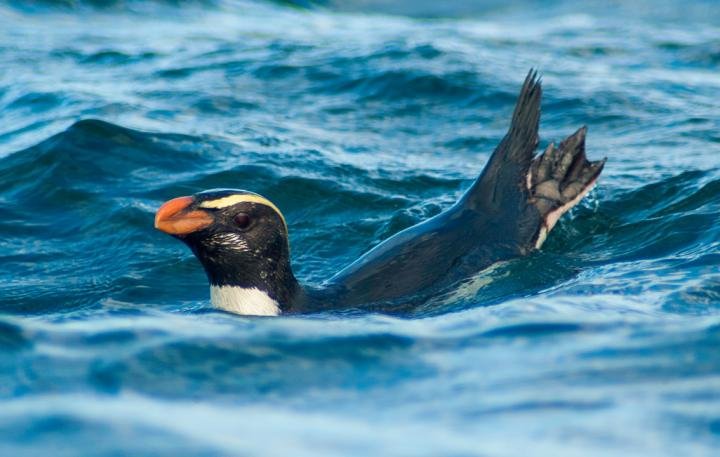
Tawaki at sea. Credit: Thomas Mattern CC-BY
Thomas Mattern, Klemens Pütz, Pablo Garcia-Borboroglu, Ursula Ellenberg, David M. Houston, Robin Long, Benno Lüthi, Philip J. Seddon. Marathon penguins – Reasons and consequences of long-range dispersal in Fiordland penguins / Tawaki during the pre-moult period. PLOS ONE, 2018; 13 (8): e0198688 DOI: 10.1371/journal.pone.0198688
August 29, 2018
Fiordland penguins, Eudyptes pachyrhynchus, known as Tawaki, migrate up to 2,500 km from their breeding site, according to a study publishing August 29 in the open-access journal PLOS ONE by Thomas Mattern of the University of Otago and colleagues.
Tawaki penguins migrate from their breeding sites on the west coast of New Zealand's South Island, where they feed at sea for several weeks to refuel after long periods of fasting on land while rearing chicks. To find out where the seabirds go, the authors attached satellite transmitters to 10 male and 7 female adult Tawaki penguins from November 2016 to March 2017, and compared the migration routes with published oceanographic data such as surface temperature and currents. Tags on nine birds continued emitting data up until they turned back for the return journey, and five were tracked for the entire migration.
They found that the penguins travelled between 3,500 and 6,800 km on their 69-day migration -- making theirs one of the longest penguin pre-moult migrations recorded to date. The birds travelled between 20km and 80km per day -- which the authors suggest may be close to the upper limit for penguin swimming.
Penguins travelled south west from the colony before heading to one of two feeding grounds -- one near the subtropical front (STF), south of Tasmania, and one further south near the subantarctic front (SAF). Birds that left the breeding site earlier in the season tended to head to the STF, and travelled 750 km shorter on average. The authors suggest that successful breeders may be more likely to depart late because of the demands of parenting, and have to swim faster to reach the more distant feeding grounds in the SAF.
Mattern notes: "The penguins leave the New Zealand coast at a time when the ocean's productivity is nearing its peak, so from that perspective, travelling thousands of kilometers seem to make little sense. We believe that this extraordinary behavior could be a remnant from an ancestral penguin species that evolved further south in the sub-Antarctic region before populating the New Zealand mainland. This would also explain why the species breeding range is concentrated to the southern coastlines of New Zealand; if breeding further north, this migratory behavior would simply not be feasible."

Tawaki at sea. Credit: Thomas Mattern CC-BY
Thomas Mattern, Klemens Pütz, Pablo Garcia-Borboroglu, Ursula Ellenberg, David M. Houston, Robin Long, Benno Lüthi, Philip J. Seddon. Marathon penguins – Reasons and consequences of long-range dispersal in Fiordland penguins / Tawaki during the pre-moult period. PLOS ONE, 2018; 13 (8): e0198688 DOI: 10.1371/journal.pone.0198688
Environment Water Flows For Farmers
August 27, 2018: NSW Environment Minister, The Hon. Gabrielle Upton
The NSW Government will release environmental water to farmers for irrigation and stock watering to assist them during the drought, Environment Minister Gabrielle Upton announced Monday, 27 August.
“Up to 15,000 megalitres of NSW water previously reserved for environmental purposes will be made available for purchase by farmers.
“This extra water could make that vital difference for farmers, allowing them to keep crops growing and stock alive. Water will be made available within the Gwydir, Macquarie, Lachlan, Murrumbidgee and Murray-Lower Darling valleys, Minister Upton said.
“All proceeds raised from purchases of this water will be held in trust with the Department of Primary Industries and used for priority drought-related projects.
“An additional 450 megalitres of groundwater will also be made available in the Riverina area,” she said.
“At the same time we will continue to maintain the health of NSW river systems and deliver important environmental water flows into wetlands such as the Macquarie wetlands and Yanga National Park.
“These wetlands provide critical drought refuge for waterbirds, fish and other native animals and are key to ensuring that our rivers can recover when rainfall and river flows return.
“I have also asked that operational assistance be provided to our rural communities. Where practical, the National Parks and Wildlife Service will make trucks and trailers available for feed transport and other pressing transportation needs.
“In other measures, we will waive the fees for existing ‘grand-fathered’ grazing permit holders in the Riverina for at least 12 months and apiary fees for national parks across NSW for 12 months. The bee keeping industry is often overlooked but they are an important industry that also provides broader agricultural benefits.
“This measure demonstrates proper balance between protecting the environment and doing what we can to provide vital assistance to drought stricken farmers,” Ms Upton said.
August 27, 2018: NSW Environment Minister, The Hon. Gabrielle Upton
The NSW Government will release environmental water to farmers for irrigation and stock watering to assist them during the drought, Environment Minister Gabrielle Upton announced Monday, 27 August.
“Up to 15,000 megalitres of NSW water previously reserved for environmental purposes will be made available for purchase by farmers.
“This extra water could make that vital difference for farmers, allowing them to keep crops growing and stock alive. Water will be made available within the Gwydir, Macquarie, Lachlan, Murrumbidgee and Murray-Lower Darling valleys, Minister Upton said.
“All proceeds raised from purchases of this water will be held in trust with the Department of Primary Industries and used for priority drought-related projects.
“An additional 450 megalitres of groundwater will also be made available in the Riverina area,” she said.
“At the same time we will continue to maintain the health of NSW river systems and deliver important environmental water flows into wetlands such as the Macquarie wetlands and Yanga National Park.
“These wetlands provide critical drought refuge for waterbirds, fish and other native animals and are key to ensuring that our rivers can recover when rainfall and river flows return.
“I have also asked that operational assistance be provided to our rural communities. Where practical, the National Parks and Wildlife Service will make trucks and trailers available for feed transport and other pressing transportation needs.
“In other measures, we will waive the fees for existing ‘grand-fathered’ grazing permit holders in the Riverina for at least 12 months and apiary fees for national parks across NSW for 12 months. The bee keeping industry is often overlooked but they are an important industry that also provides broader agricultural benefits.
“This measure demonstrates proper balance between protecting the environment and doing what we can to provide vital assistance to drought stricken farmers,” Ms Upton said.
Minister Meets With Recreational Fishing Industry
Monday, 27 August 2018: The Hon. Niall Blair, Minister for Primary Industries, Minister for Regional Water, Minister for Trade and Industry
Today I met with a number of representatives from the recreational fishing industry to hear their input following the recent Marine Estate Management Authority marine proposal announcement.
There has been considerable angst over the proposal and I am committed to making sure we get the balance right for our local communities, our fishers and the environment.
This is a balancing act, but make no mistake, the voices of our fishers will be heard loud and clear throughout this consultation period.
The recreational fishing sector plays a huge role in driving tourism, our economy, jobs and the social well-being of our State.
We had a productive meeting in which we spoke of alternative management arrangements, the perceptions of the proposal as anti-fishing, the need for simple and easy feedback forms and concerns that a number of the sites didn’t take local knowledge into account.
A key request too, was that any final proposal made sure fishers were recognised as being part of the solution rather than just a risk to the marine environment.
As a fisherman myself, I understand these concerns clearly. My job is to advocate for the fishers of NSW and I won’t be leaving our fishers’ voices out of this process.
We will make sure we get the balance right.
Everyone across NSW now has a chance to have their say on the proposals, which involve 25 specific sites, dotted between Newcastle and Wollongong.
I encourage concerned fishers to view the proposals to ensure the best possible feedback.
For more information visit Marine Parks Phase 3 Consultation Commences: Local Changes Details - from Lion Island to Barrenjoey, Narrabeen, Long Reef, Manly and Chowder Bay at Mosman - feedback sought to Sept. 27
Monday, 27 August 2018: The Hon. Niall Blair, Minister for Primary Industries, Minister for Regional Water, Minister for Trade and Industry
Today I met with a number of representatives from the recreational fishing industry to hear their input following the recent Marine Estate Management Authority marine proposal announcement.
There has been considerable angst over the proposal and I am committed to making sure we get the balance right for our local communities, our fishers and the environment.
This is a balancing act, but make no mistake, the voices of our fishers will be heard loud and clear throughout this consultation period.
The recreational fishing sector plays a huge role in driving tourism, our economy, jobs and the social well-being of our State.
We had a productive meeting in which we spoke of alternative management arrangements, the perceptions of the proposal as anti-fishing, the need for simple and easy feedback forms and concerns that a number of the sites didn’t take local knowledge into account.
A key request too, was that any final proposal made sure fishers were recognised as being part of the solution rather than just a risk to the marine environment.
As a fisherman myself, I understand these concerns clearly. My job is to advocate for the fishers of NSW and I won’t be leaving our fishers’ voices out of this process.
We will make sure we get the balance right.
Everyone across NSW now has a chance to have their say on the proposals, which involve 25 specific sites, dotted between Newcastle and Wollongong.
I encourage concerned fishers to view the proposals to ensure the best possible feedback.
For more information visit Marine Parks Phase 3 Consultation Commences: Local Changes Details - from Lion Island to Barrenjoey, Narrabeen, Long Reef, Manly and Chowder Bay at Mosman - feedback sought to Sept. 27
Mona Vale Garden Club's 47th Spring Flower Show
Saturday, 22 September 2018 - 10:00am to 3:00pmEveryone is invited to come to an exhibition of flowers, pot plants, vegetables, herbs and floral art.
There will also be sales of:- plants
- white elephant goods
- cakes
- refreshments
Entry: Adults $2, children free All profits will be donated to local charities.
Contact InformationMona Vale Garden Club IncName: PaulinePhone: 0418 221 907
LocationTed Blackwood HallCnr Jacksons & Boondah RoadsWarriewood NSW 2102

- plants
- white elephant goods
- cakes
- refreshments

Entries Open For 2018 NSW Farmers Of The Year Award
July, 24, 2018: NSW DPINSW Minister for Primary Industries and outgoing NSW Farmers President Derek Schoen have announced applications for the prestigious NSW Farmer of the Year award have opened for 2018.
Speaking at the NSW Farmers Annual Conference today, Minister Blair said the award is both a celebration and recognition of farming excellence through the diverse range of enterprises across NSW.
“Our farmers represent some of the most innovative, industrious primary producers in the country and produce some of the highest quality food and fibre to be found anywhere in the world,” Minister Blair said.
“The state’s $15 billion primary industries sector is going from strength to strength under the stewardship of our farmers, who demonstrate drive and determination to run efficient, profitable and sustainable businesses.”
Mr Schoen has served as a judge of the award throughout his Presidency and said the 2017 finalists represented the breadth of NSW’s farming sector.
“From biodynamic, organic egg farming to a commercial cropping enterprise gaining efficiencies through environmental practices, from young guns through to farmers who have had a life-long commitment to farming excellence, the calibre of applications to the NSW Farmer of the Year award continues to be hugely impressive,” he said.
“The award helps identify outstanding farmers who are pushing the boundaries within their industry and in farming generally, and recognises people with outstanding management skills who demonstrate a combination of innovation, profitability, sustainability and community involvement.
“I strongly encourage all farmers in the primary industries sector to enter to become the 2018 NSW Farmer of the Year.”
The successful 2018 Farmer of the Year will be awarded $10,000, and finalists will receive $2,000.
The award is an initiative of the NSW Department of Primary Industries and NSW Farmers, with support from SafeWork NSW and Fairfax Agricultural Media.
The application process is now online, where you can both apply and nominate a farmer by visiting www.nswfarmeroftheyear.com.auwith entries closing 26 September 2018.
Long Reef Guided Reef Walks
Please find below the 2017 – 2018 timetable for guided walks of Long Reef Aquatic Reserve.
If you’d like to join us on a walk please contact me a couple of weeks before the walk date to make a booking. FREE GUIDED WALKS of Long Reef Aquatic Reserve with NSW Department of Industry & Investment Fishcare Volunteers will be held on the following date:
Dates for 2018Sunday 9 September 2018 12:30pm – 2:30pmSunday 7 October 2018 12:30pm – 2:30pmSunday 4 November 2018 11:30am – 1:30pmSunday 9 December 2018 4:00pm – 6:00pm
Dates for 2019Sunday 6 January 2019 3:00pm – 5:00pmSunday 20 January 2019 2:00pm – 4:00pmSunday 17 February 2019 1:00pm – 3:00pmSunday 17 March 2019 11:30am – 1:30pmSunday 7 April 2019 2:30pm – 4:30pm
Walks are held subject to weather conditions
Bookings are preferred.Please email Wendy to book: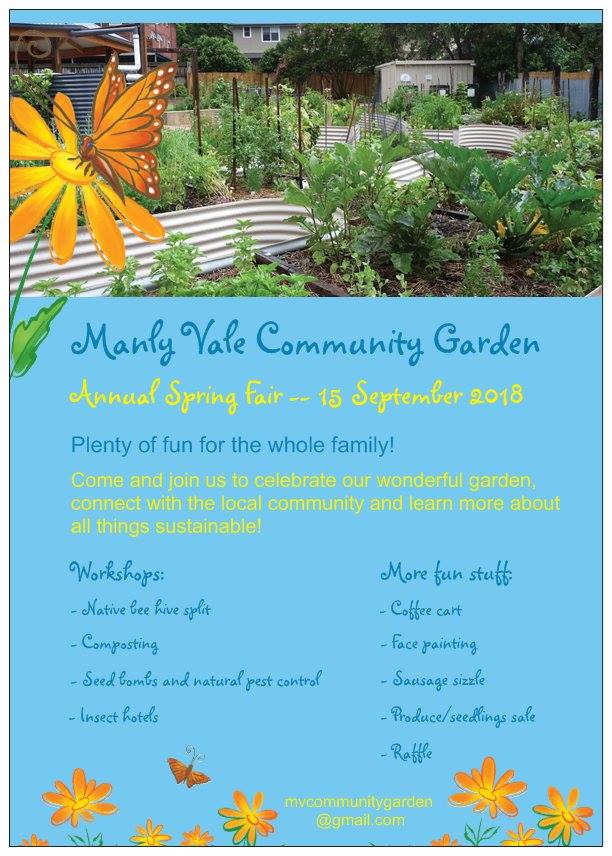

Katandra Season 2018
Open Days at Katandra Bushland Sanctuary are open again aftyer the Hazard Reduction a few weeks back.
Visit Katandra's Profile for more details and pop up and visit from August 12th.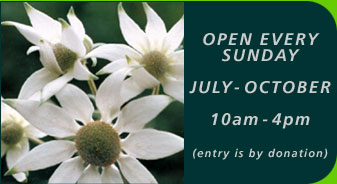

Newport Community Garden: Working Bee Second Sunday Of The Month
 Newport Community Gardens Inc. is a not for profit incorporated association. The garden is in Woolcott Reserve.
Newport Community Gardens Inc. is a not for profit incorporated association. The garden is in Woolcott Reserve.
ObjectivesLocal Northern Beaches residents creating sustainable gardens in public spacesStrengthening the local community, improving health and reconnecting with natureTo establish ecologically sustainable gardens for the production of vegetables, herbs, fruit and companion plants within Pittwater area To enjoy and forge friendships through shared gardening.Membership is open to all Community members willing to participate in establishing gardens and growing sustainable food.Subscription based paid membership.We meet at the garden between 9am – 12 noonNew members welcome
For enquiries contact newportcommunitygardenau@gmail.comFacebook: https://www.facebook.com/pg/newportcg Instagram: https://www.instagram.com/newportcgnsw
 Newport Community Gardens Inc. is a not for profit incorporated association. The garden is in Woolcott Reserve.
Newport Community Gardens Inc. is a not for profit incorporated association. The garden is in Woolcott Reserve.Pittwater Reserves
Annie Wyat Reserve - A W PictorialBarrenjoey Headland: Spring flowers Barrenjoey Headland after fire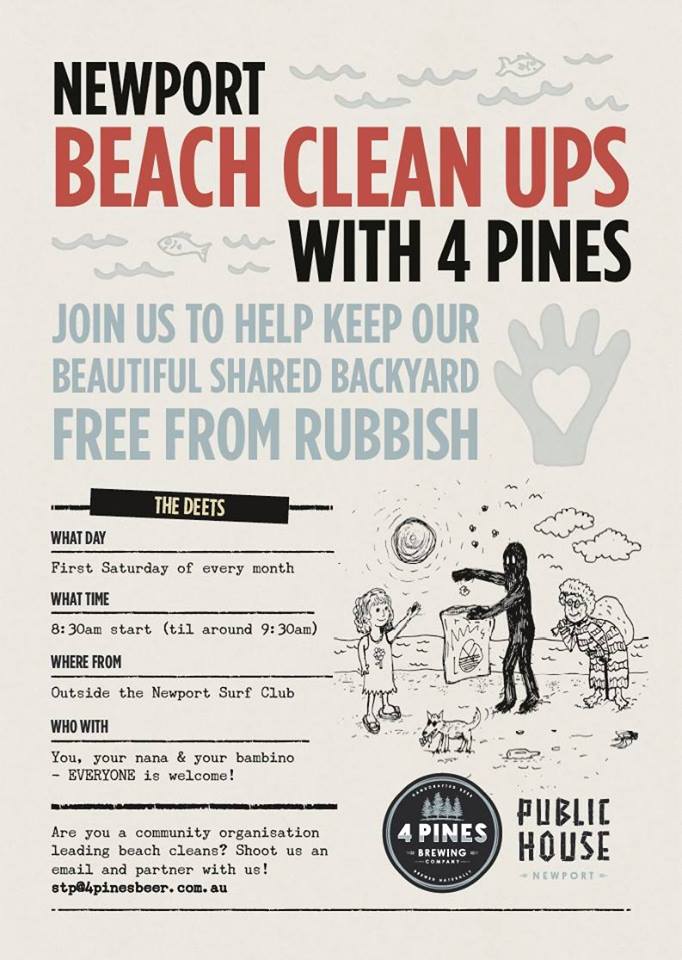 4 Pines Brewery Newport will be providing up-cycled malt bags from the brewery to store the trash and keep it from our shores.
4 Pines Brewery Newport will be providing up-cycled malt bags from the brewery to store the trash and keep it from our shores.
Do you get a beer? Absolutely! 4 Pines will hand out tokens to participants which will be redeemable for a fresh cold beer back at Public House.

Stony Range Spring Fair
Sunday, September 9 at 9 AM - 4 PMStony Range Regional Botanic Garden810 Pittwater Road, Dee WhyHosted by Stony Range Regional Botanic Garden and Australian Plants Society Northern Beaches GroupFREE
Join in the fun at the Stony Range 'Bush Dreaming Spring Festival Sunday 9th September 2018Native plant sales and advice, displays and walks.
Children's activities, live native animals. Sculptures, photographs, live music.BBQ and coffee shop, home made cakes
10:30am is the official opening with Welcome to Country.
Cultivation advice from the members of Stony Range Botanic Garden & Australian Plants Society Northern Beaches Group.


Bee Keeping Talk At Warriewood
 Thursday, September 27, 20187:15pm – 9:00pmNelson Heather Centre4 Jacksons Rd.WarriewoodAt tonight's meeting hear about native and European honey bees and what PNB is doing as part of our bee program on the Northern Beaches of Sydney. Native bees are an important part of our biodiversity chain as well as a great source of nutritious honey.
Thursday, September 27, 20187:15pm – 9:00pmNelson Heather Centre4 Jacksons Rd.WarriewoodAt tonight's meeting hear about native and European honey bees and what PNB is doing as part of our bee program on the Northern Beaches of Sydney. Native bees are an important part of our biodiversity chain as well as a great source of nutritious honey.
Sydney has over 200 species of native bees many of which are solitary bees that require habitat in our gardens. You can also promote bees by providing a chemical free garden for them to pollinate. PNB has a program for selling native bees hives to supporters or program hives for free to community organisations.
More information on this and a lot more will be available on the night.
Paul Hoskinson is the bee team leader for PNB and also was a key driver in the setting up of the Northern Beaches Beekeepers Association.
‘If bees were to disappear for the globe, humankind would have only four years left to live’ Albert Einstein. Bees help us with pollination and are a vital part of our ecosystem. This will be a night not to be missed!
Doors open 7:15 pm at the Banksia Room, Nelson Heather Centre, 4 Jacksons Rd. Warriewood. All welcome, entry by donation. No need to book. There will also be a swap table - enjoy honey tasting + bring along plants, books, pots to swap.
Organic teas and coffee available, bring a plate of food to share also.
 Thursday, September 27, 2018
Thursday, September 27, 2018PNHA Newsletter 76
Read about wild life in the 'Burbs - How to identify local owl calls, the Wing Tag project and PNHA's latest campaign news.


Greening Your Home - Eco Retrofitting The Suburbs - Special Event

There’s no need for a ‘tree-change’ or ‘sea-change’ - Permaculture has made a shift to the suburbs
An extraordinary evening is planned for up to 400 people at Dee Why RSL on Tuesday 9th October at 7pm.
‘Our aim is to better equip residents of the Northern Beaches and beyond to live sustainably in the suburbs.’ said Michelle Sheather, Permaculture Northern Beaches Green Home team leader. ‘Over the last 18 months, PNB’s Green Home project has run dozens of workshops, meetings and courses on organic living, sustainable building, clean energy and wise use of resources.’
The culmination of the project, made possible by a community grant from Northern Beaches Council, is the October 9 special event on Eco Retrofitting the Suburbs. The panel of speakers for one night only, is David Holmgren, Jo Gillies and Costa Georgiadis. The talks will show how ordinary Australians can downshift and retrofit their houses, gardens, and lifestyles to be more sustainable and resilient.
David Holmgren, is one of the founders of permaculture, a leading ecological thinker, teacher, respected writer and speaker. He promotes permaculture as a realistic pathway to sustainability and a powerful way of life. David’s talk will introduce his best-selling new book RetroSuburbia - the downshifter’s guide to a resilient future (2018) that empowers us to make positive changes to everyday actions extending from the household out into neighbourhood and wider community activity.
Jo Gillies is founder and director of Archisoul Architects in Manly. She has worked with clients across the Northern Beaches to design sustainable houses that suit our climate, region and lifestyle. Jo will speak on aspects of sustainable house design including passive solar, energy options and which materials can be used to lessen our environmental footprint. Design efficiencies for existing buildings and how do an eco-friendly retrofit will be discussed. Jo will show that good design principals can create a sense of community and soul for the household.
Costa Georgiadis has been the host of Gardening Australia, the ABC's iconic gardening show, since 2012. He is a landscape architect who has a passion for plants and people. For Costa, soil and water are central to absolutely everything. Costa has written the forward for the book ‘Don’t be afraid to throw open RetroSuburbia on any page at any time and dive into the possible …’ says Costa.
Come along to be part of this great evening. Bookings are essential www.permaculturenorthernbeaches.org.auA donation of $5 is recommended as entry fee.
The talk night will be during the school holidays, older children and teenagers are most welcome with an adult. A raffle with prizes of eco products and a copy of David’s book will be held on the night.
Permaculture is a design system for sustainable living in your home, garden and lifestyle. It originated in Tasmania in the 1970s with co-founders Bill Mollison and David Holmgren and is now practiced worldwide. ________________________________________________________________________________________________________

Temperature Model Predicts Regional And Seasonal Virus Transmission By Mosquitoes
August 28, 2018Scientists have built a model that predicts how temperature affects the spread of Ross River virus, a common mosquito-borne virus in Australia, according to a report in the journal eLife.
The research demonstrates the importance of using temperature to predict epidemics of mosquito-borne diseases and could help public health bodies prepare for the impact of climate change on the spread of tropical diseases worldwide.
"Scientists are realising that warmer temperatures mean longer mosquito seasons and mosquitoes entering new regions where it was previously too cold for them to survive," says senior author Erin Mordecai, Assistant Professor in Biology at Stanford University's School of Humanities and Sciences, US. "Warm temperatures also speed up the biological processes that help mosquitoes spread viruses. But working out the precise effect of temperature on different stages of mosquito growth and spread of viruses is tricky, because so many factors are involved."
Australia and the Ross River virus (RRV) offer an ideal opportunity to study the effects of temperature on disease transmission. RRV infects between 2,000-9,000 people each year in Australia and causes long-term joint pain and disability. Most people live in cities ranging in latitude from the north to the south of the country. Each season, as the temperature rises, RRV epidemics move from the subtropical north to temperate south.
The team used two species of mosquito most responsible for RRV outbreaks in Australia to build a model using laboratory data on traits such as mosquito growth, survival, bite rate and infectiousness in response to different temperatures. "Our model correctly predicted that RRV is endemic across tropical Northern Australia year-round, and is seasonally epidemic in the cooler regions of Southern Australia," explains Sadie Ryan, Associate Professor of Medical Geography at the University of Florida, US, and second author of the study. "When human population data was added into the model, its prediction of seasonal patterns matched recorded human cases of RRV."
The model determined that the optimal temperature for RRV spread was 26°C (80°F) and transmission would be limited at temperatures below 17°C (63°F) and above 32°C (89°F), which matches current patterns of disease. Mosquito lifespan was the most important temperature-dependent factor limiting transmission, and fertility and survival were prohibiting factors at temperatures that were too low or high for transmission. As transmission is limited by temperatures that are too cold and too hot, it may increase in some locations as a result of climate warming, while decreasing in others.
"Our study provides strong evidence that temperature drives infection patterns at the continent-wide and seasonal levels," says first author Marta Shocket, Postdoctoral Scientist in Stanford's Biology Department. "In the short term, our work will help researchers build better statistical models for RRV which can be used to make more specific predictions based on climate change. In the long term, it should help mosquito control agencies better plan for the future and may provide further evidence of the need to combat climate change."
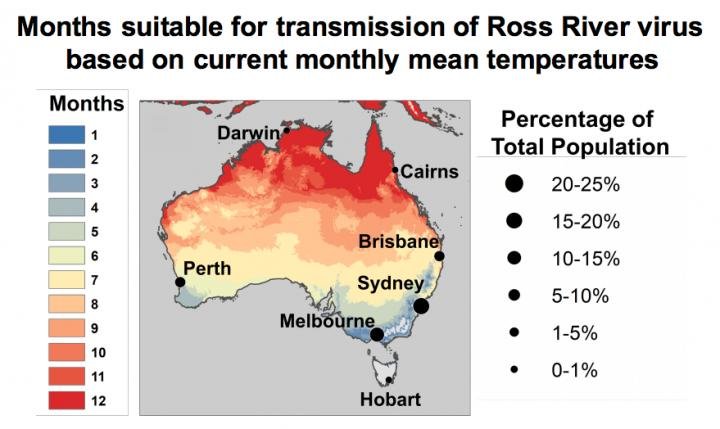
This is a map showing the months suitable for the transmission of Ross River virus based on current monthly mean temperatures.Credit: Shocket et al., 2018
Marta Strecker Shocket, Sadie J Ryan, Erin A Mordecai. Temperature explains broad patterns of Ross River virus transmission. eLife, 2018; 7 DOI: 10.7554/eLife.37762

Disentangling The Relationships Between Cultural Traits And Other Variables
August 28, 2018A team of researchers led by scientists at the Max Planck Institute for the Science of Human History and Australian National University analyzed how to avoid misinterpreting correlations in cross-cultural studies, published in Royal Society Open Science. The researchers identify three sources of non-independence in cultural variables -- meaning, the variables are correlated but are not caused by each other -- and present methods to control for these.
Recently, a growing number of researchers are hoping to gain insights into human cultural evolution and the diversity of human culture using comparative studies. In essence, this type of work looks for cultural traits or environmental factors that cause other cultural traits -- such as the impact that subsistence strategy has on religious beliefs or the impact that the density of rivers has on language diversity. This work has been made vastly more approachable due to the expansion of large databases cataloging the relevant data, and the improvement of the programming and computing power necessary to make these comparisons. However, problems remain because many of the resulting studies make interpretations without controlling for factors that might make cultural variables seem causally related when they are not.
A team of researchers led by scientists at the Max Planck Institute for the Science of Human History and Australian National University has analyzed how to avoid misinterpreting correlations in cross-cultural studies and has identified three sources of non-independence in cultural variables -- meaning, the variables are correlated, but are not caused by each other. The three sources identified are: (1) phylogenetic non-independence, meaning that the cultures are related to each other and a shared trait has been inherited by both from a common ancestor culture, rather than developed because it serves the same functional purpose in both cultures; (2) spatial autocorrelation, meaning the cultures share traits because they are geographically close to one another and thereby share many aspects of the same environment and history; and (3) covariation, meaning two traits correlate not because one causes the other but because both are caused or influenced by another variable.
The researchers then lay out guidelines to correct for these sources of non-independence and provide a case-study, looking at the connections between parasite load and various cultural and environmental factors. Parasite load has been hypothesized to have direct and dramatic impacts on a number of cultural traits -- including religiosity, sexual behavior, in-group preference and population density. However, by controlling for the three sources of non-independence described above, the authors show that, contrary to previous studies, parasites have no more explanatory power for cultural traits than many other environmental factors like biodiversity, climate and latitude.
The authors emphasize that there are two issues at play with these sources of non-independence. One is whether two variables are correlated in the first place. Correcting for phylogenetic non-independence and spatial autocorrelation addresses this issue. The second is whether the correlation between two variables is evidence of a causal relationship. Correcting for covariation addresses this issue. This is important, because simply finding a correlation between two variables and then hypothesizing a possible causal mechanism between them is not enough to prove causality. "For example, people have hypothesized that the correlation between a high parasite load and lower average IQ is caused by the metabolic costs of infection reducing investment in cognitive development," explains Simon Greenhill of the Max Planck Institute for the Science of Human History. "However, this hypothesis is highly problematic as IQ also correlates just as strongly with other measures of biodiversity, such as number of mammal species. But we are not tempted to come up with a hypothesis to explain why having lots of mammal species reduces a nation's average IQ."
"Our results suggest that we must be cautious in interpreting these cross-cultural correlations as a reflection of causal connections," states Greenhill. "Correcting for statistical biases is necessary to avoid being led astray by interpreting incidental associations as meaningful of causal connections."
Lindell Bromham, Xia Hua, Marcel Cardillo, Hilde Schneemann, Simon J. Greenhill. Parasites and politics: why cross-cultural studies must control for relatedness, proximity and covariation. Royal Society Open Science, 2018; 5 (8): 181100 DOI: 10.1098/rsos.181100
Blood-Borne Cancer Detection Receives Gold-Plated Boost
August 27, 2018: By Lachlan Gilbert, UNSWScientists will be able to detect cancer earlier from blood samples after advances were made in detecting microRNA molecules using gold-plated nanoparticles.
UNSW researchers have discovered a new way to detect ultralow levels of microRNA in a blood sample which could make diagnosis of cancer and other illnesses quicker and more efficient.
The research team used nanoparticles to latch on to the targeted microRNAs (miRNAs) which enabled them to be easily extracted. One of the main benefits was that it was effective even when the miRNA was in minuscule amounts in the blood sample. Previously, a much larger sample was needed to extract similar amounts.
MicroRNAs are short RNA molecules that target some messenger RNAs (genetic material used to synthesise proteins) to prevent them from coding for a specific protein. Impaired miRNA activity has been linked with the formation of cancerous tumours as well as metastasis, the spread of cancer to other parts of the body.
In the paper published today in Nature Nanotechnology, the researchers reported modifying gold-coated magnetic nanoparticles (Au@MNPs) with DNA to match the miRNA they wanted to detect.
be orders of magnitude cheaper. Our method takes 30 minutes compared with almost 12 hours for quantitative polymerase chain reaction,” Professor Gooding said.
Key to the new technology is not just the ability to detect lower concentrations of miRNA but the ability to detect a broad range of concentrations.
“This is really important to determine whether the levels of different microRNAs have increased or decreased,” Professor Gooding said.
“We can do this very quickly compared with the gold-standard nucleic acid amplification methods. And we can do it in unprocessed blood.
“What this means is the technology has the potential to determine the levels of microRNA just from a finger prick test.”
Professor Gooding said he would expect the technology to be available within three years, pending regulatory approvals.
The new diagnostic technique follows on the heels of a similar advance made by another UNSW research team exploring cancer detection in the blood.
In that study, published in Nature Communications, a team of medical researchers led by Professor Chris Heeschen developed a new way to detect early-stage cancer tumour cells in the blood using a malaria protein. This method, which targeted individual cancer cells found in a blood sample, also used a magnet to retrieve all the targeted cancer cells.
Professor Gooding believes the two methods, while working on very different scales, would be very complementary as tools to diagnose cancer.
“The malaria protein technology works by detecting cancer cells, rare cells in particular. These are found in the blood also and so are also compatible with the liquid biopsy concept,” he said.
“We are detecting small molecules found in the blood which could also identify the type of cancer, while they are looking for rare cells that are responsible for the spread of cancer. The two technologies could work very well together.”
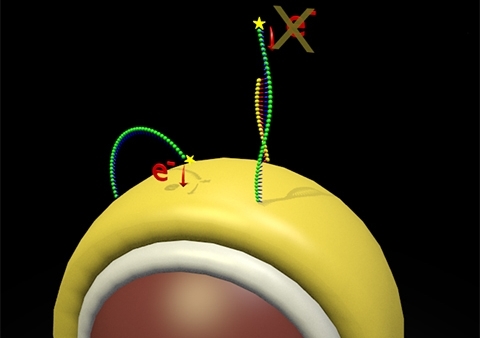
A computer representation of the gold coated nanoparticles that make up the dispersible electrodes. These are modified with DNA that gives an electrochemical signal. When microRNA binds, the electrochemical signal is switched off. The magnitude in the change in current is related to the concentration of miRNA.
________________________________________________________________________________________________________

Seniors Call For Independent Age Pension Tribunal
August 30, 2018: National SeniorsAustralia’s peak advocacy group for seniors has called for an independent tribunal to set the amount of the age pension in a bid to take politics out of the process.
National Seniors Australia Chief Advocate Ian Henschke said today achieving a fair go for age pensioners was one of the key issues being pursued by the organisation, in partnership with Australia’s oldest charity, the Benevolent Society, as part of their Fix Pension Poverty campaign.
The age pension had become a prime target for federal budget savings, with an ageing population and the overall cost used to justify cutting the number of people receiving the pension.
Mr Henschke said of the 1.5 million older Australians receiving a full age pension, 40 per cent relied on it as their sole source of income and almost one in three were living below the poverty line.
“If you are a single person receiving the Age Pension and you aren’t entitled to rent assistance (because you are a home owner), your income is $56 a week below the poverty line,” Mr Henschke said. “It reflects poorly on government when older Australians live in poverty.
“Older renters are particularly hard hit. More than 250,000 pensioners don’t own their home and on average, a pensioner receives only a third of what’s required to pay rent these days.
“Single older women are more likely to be living in poverty. They have less savings and superannuation because they take time out of the workforce to raise children and care for aged parents.”
Mr Henschke said recent public debate about the age pension had become “toxic”, with younger taxpayers being told by government they were bearing an increasing burden to fund the age pension.
“Politics must be taken out of the process,” he said. “An independent age pension tribunal is the first step to a fairer retirement income system that meets the needs of older Australians.”
Mr Henschke said the proposed tribunal would calculate a fair and adequate pension rate, along with supplements, based on need and circumstances. Its decisions would be accepted by government without debate in the same way monetary policy was set by the Reserve Bank, with determinations made every November to provide enough time to be accounted for in the May budget.
National Seniors and the Benevolent Society were building a grassroots campaign for change in the way the age pension was set, Mr Henschke said.
“We’ve been visiting our branches and speaking with members and will be lobbying federal parliamentarians from all parties to support establishment of an independent age pension tribunal.”
The Benevolent Society’s Joel Pringle said working closely with National Seniors meant the campaign was reaching people around Australia.
“A government that cares about older people is one that does not accept the dire circumstances faced by too many who are relying on an inadequate age pension,” Mr Pringle said. “We haven’t seen a lot of that lately, but the Fix Pension Poverty campaign aims to change that.”
To join the Fix Pension Poverty campaign, go to fixpensionpoverty.org.au or click here.
Political Hijinks Deliver Some Positives For Seniors
August 30, 2018: National SeniorsBy National Seniors Chief Advocate Ian HenschkeThe events of last week in Canberra have been seen by many observers as everything from high drama to high farce.
This week’s 4 Corners program is worth watching to understand how it unfolded.
We have a new Prime Minster. What can I say, other than to quote the late American writer Kurt Vonnegut who was fond of explaining the ludicrous nature of the universe: “So it goes.”
That makes the fifth PM in six years. I saw a newspaper report today about an apron that sported the slogan “Ban Single Use Prime Ministers”.
The good thing, from a National Seniors policy and advocacy perspective, is we have the same Health Minister, Greg Hunt, and same Aged Care Minister, Ken Wyatt, in the ‘new’ cabinet. Mr Wyatt also has an added new responsibility as Minister for Senior Australians. We have a new minister for Social Services and Digital Transformation in Michael Keenan who replaces Dan Tehan (now Minister for Education).
So how does this all affect older Australians? We will have to wait and see. Scott Morrison said he framed his last budget around the needs of older Australians. He said he wanted “to support the choice of older Australians who wish to stay at home and avoid going into residential care”. He also increased the pensioner work bonus and delivered several other measures we called for.
You’ve told us that you also want to remain in your own home as you age. That’s why we will continue to campaign for more help for those who are caring for their loved ones, more home care packages, and for better care for those who do end up in residential aged care.
I have been busy in the media reminding the Morrison Government of the promises made in last days of the Turnbull Government. These were:- maintaining the Energy Supplement for pensioners; and
- implementing the key recommendations in the ACCC report into the retail pricing of electricity to cut your power bills by hundreds of dollars a year.
It seems to many that this latest leadership saga had its roots in the apparent determination of Tony Abbott to wreak vengeance on Malcolm Turnbull. Whatever the cause, the result is now we have another Prime Minister who achieved the role in the party room rather than as the result of an election.
The Labor Party, meanwhile, must be hoping that the tradition of Australian voters to punish divided parties will continue.
The election looks certain to be next year and in the run up we will continue to fight for a fair go for older Australians - and remind all sides of politics that every second voter is aged over 50.
- maintaining the Energy Supplement for pensioners; and
- implementing the key recommendations in the ACCC report into the retail pricing of electricity to cut your power bills by hundreds of dollars a year.
Better Mental Health For Older People In NSW
August 26, 2018: Minister for Mental Health, The Hon. Tanya DaviesMental health first aid training for seniors and those working with older people will take place across NSW to help identify and lead people to mental health support earlier.
Minister for Mental Health Tanya Davies today announced community organisations across the State will share in $200,000 in 2018/19 from the NSW Government to deliver the training.
“Often mental health issues experienced by older people can go undetected. These workshops will mean problems can be detected earlier and help reached sooner,” Mrs Davies said.
“Those who receive the training will be able to give initial assistance and then advice about where to go for help, if needed. The NSW Government is committed to improving the wellbeing of seniors and this initiative is just one piece of the puzzle.”
Funding will be provided to the following organisations to conduct the Older Persons Mental Health First Aid (OPMFHA) training:- Wesley Mission - $75,000 to deliver OPMHFA training in Sydney, South Eastern Sydney (including St Vincent’s Health Network), Northern Sydney, Southern NSW, Murrumbidgee and Far West Local Health Districts
- Set2Learn - $50,000 to deliver OPMHFA training in South Western Sydney, Nepean Blue Mountains, Western Sydney and Illawarra Shoalhaven Local Health Districts
- St John Ambulance Society Australia NSW - $30,000 to deliver OPMHFA training in Hunter New England and Western NSW Local Health Districts
- Australian Red Cross Society - $30,000 to deliver OPMHFA training in Mid North Coast and Northern NSW Local Health Districts
- Central Coast Local Health District (mental health service) - $12,500 to deliver OPMHFA training in Central Coast Local Health District.
All successful organisations have identified experienced trainers to complete instructor training with Mental Health First Aid Australia, with a further $100,000 project funding provided to cover the costs of instructor training.
In 2018-19 the NSW Government will invest $100 million as part of the Government’s 10-year vision for mental health reform in NSW, recognising that improving mental health outcomes for the people of NSW involves a whole of government reform agenda.
The Older Person Mental Health First Aid training workshops will build on the successful Youth Mental Health First Aid training workshops funded by the NSW Government and delivered by Wesley Mission in 2016-17.
The CEO of Wesley Mission, the Rev Keith Garner, AM, said Wesley Mission was delighted with the opportunity to provide Older Persons Mental Health First Aid training.
“The mental health challenges facing older Australians are growing and becoming more complex,” Mr Garner said.
“Mental Health First Aid training is important for early intervention, maintaining the dignity and well-being of inpiduals and building our community’s capacity to care.”
Older Person Mental Health First Aid training is expected to commence across NSW from October this year, with successful organisations promoting the training and taking registrations in their delivery regions.
If you or someone you know needs crisis support please phone Lifeline on 13 11 14. For more information on where to find mental health services in your community contact the NSW Mental Health Line on 1800 011 511.
_______________________________________________________________________________________________________
- Wesley Mission - $75,000 to deliver OPMHFA training in Sydney, South Eastern Sydney (including St Vincent’s Health Network), Northern Sydney, Southern NSW, Murrumbidgee and Far West Local Health Districts
- Set2Learn - $50,000 to deliver OPMHFA training in South Western Sydney, Nepean Blue Mountains, Western Sydney and Illawarra Shoalhaven Local Health Districts
- St John Ambulance Society Australia NSW - $30,000 to deliver OPMHFA training in Hunter New England and Western NSW Local Health Districts
- Australian Red Cross Society - $30,000 to deliver OPMHFA training in Mid North Coast and Northern NSW Local Health Districts
- Central Coast Local Health District (mental health service) - $12,500 to deliver OPMHFA training in Central Coast Local Health District.
New Appointments For Australian Hearing
30 August 2018The Hon Michael Keenan MPMinister for Human Services and Digital TransformationI am pleased to announce two new appointments to Australian Hearing, the nation's largest provider of Government-funded hearing services.
Mr Kim Terrell has been confirmed as the Managing Director of Australian Hearing.
Mr Terrell has been acting in the role since March and will begin his five-year term as Managing Director on 1 September 2018.
Mr Terrell excelled in the role in this capacity and was a fitting choice for the ongoing appointment given his strong public sector leadership experience, including at the Department of Human Services, the Digital Transformation Agency, the Department of Prime Minister and Cabinet and the Attorney-General's Department.
The Australian Hearing Board recommended Mr Terrell's appointment based on his proven ability to meet social and public health policy objectives.
In addition to Mr Terrell's appointment, Mr Kim Keogh has been appointed as a special purpose Director to the Australian Hearing Board for a period of up to a year.
Mr Keogh will commence in this role on 1 September 2018.
UNSW Engineers Win US Naval Grant To Develop Brain-Machine Interface
August 28, 2018: By Louise Templeton, UNSWUNSW Sydney Engineering researchers have been awarded a US Naval Research grant to advance the development of chips to read neural activity from the brain, which could lead to the creation of a brain-machine interface to restore lost functions in disabled people.
Dr Leonardo Silvestri and Professors Francois Ladouceur and Nigel Lovell from UNSW Engineering were awarded the US$359,000 (AU$490,215) grant to continue their research in neural interfacing, which refers to a direct communication pathway between a wired brain and an external device. The ultimate goal is to enable two-way communication between the brain and a machine – for example an artificial limb or a computer. The team invented the first chip that uses fibre optics technology to measure signals from the brain and convert them to an image that can be read.
Dr Silvestri said: “We’ve developed optrodes – pixel-like sensors on a chip – that pick up electrical signals when placed on brain tissue. At the back of the chip are optical fibres that measure this brain activity and translate it into a visual image. This is the information we can interpret and use to control a connected device, which could have potential applications in numerous fields.”
Fibre optic technology has advantages over conventional electrical wiring because it uses light pulses to send data along optical fibres, which have a much higher bandwidth. The fibre optic technology allows for faster transfer of more data, using thinner, sturdier and more compact cables than electrical wiring.
“What we are building is a chip with a million electrodes, with a small bundle of thin, lightweight glass fibs going from the brain to a small device in your pocket, from where it can transmit wirelessly. Our solution is far easier to scale than those using traditional wiring and it’s also less susceptible to interference – so when instructing a machine we can be much more precise. This will be especially valuable for medical applications,” Dr Silvestri added.
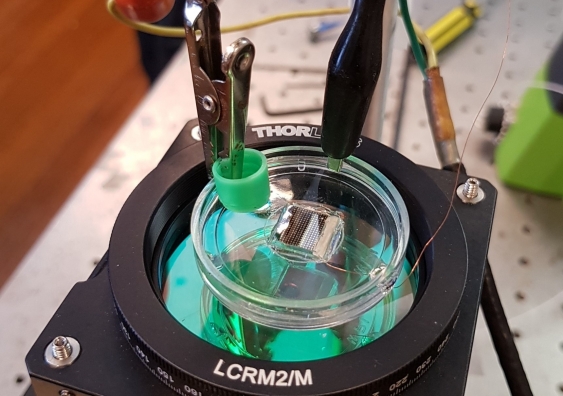
UNSW Engineering fibre optic chip
While health care is an obvious field to benefit from these developments, other areas that could take advantage of collecting and understanding brain signals include workplace safety, ‘smart’ home or office environments, marketing research, authentication and security, and entertainment.
Professor Ladouceur believes the team’s invention will be a life-changer for millions of people.
“This is going to be bigger than quantum computing, because it will affect humans and significantly improve their quality of life by enhancing human abilities across a number of fields,” Professor Ladouceur said.
“We are a few years away from having someone control their own prosthetic limb or preventing an epileptic seizure. We still need to address challenges in scalability – by developing a denser chip that is capable of transmitting sufficient electrical signals from the brain to make it possible to accurately control a machine. We also need to ensure biocompatibility – which means ensuring there will be no adverse effects when implanted into humans. But these are perfect engineering challenges, which we will overcome.”
Dean of UNSW Engineering, Professor Mark Hoffman said: “We live in the most exciting time ever to be an engineer. This team from UNSW Engineering, working at the exciting interface of brain and machine, has created an exceptional piece of technology and we are extremely grateful to US Naval Research for backing them to take their invention through to its next stage of development.”
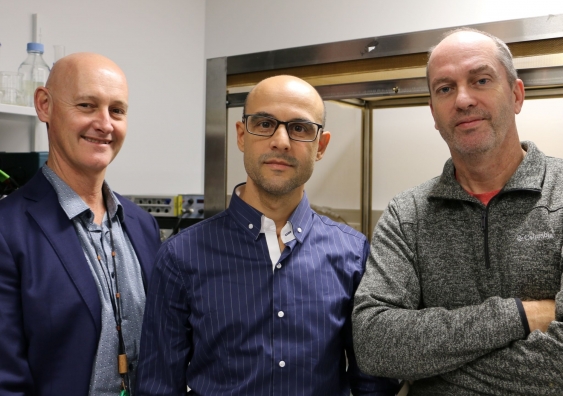
Professor Nigel Lovell, Dr Leonardo Silvestri and Professor Francois Ladouceur.___________________________________________________________________________________________________________


Five Million Australian Parents Providing Handouts To Adult Kids
August 30, 2018
More than five million Australian parents are helping their adult children financially, according to comparison website finder.com.au.
The new survey of 2,011 respondents found 61 per cent of parents supported their kids financially, with 22 per cent admitting they offered to help.
Sixteen percent of parents helped their offspring because their kids struggled to manage their own money.
The research also showed 10 per cent of parents helped their adult children because they didn’t have a job, while 9 per cent give financial support because their adult kids were in debt.
Bessie Hassan, Finder's money expert, explained if parents are always stepping in, their kids might not learn financial independence.
“The transition to adulthood can be confronting, especially with the rising cost of living, but leaving the money ‘training wheels’ on for too long can do more harm than good,” Ms Hassan said.
“It can’t always be mum and dad to the rescue.
“Giving too much support can make it harder for young adults to understand the true value of money, and how to manage financial adversity when things don’t go to plan.”
Cash handouts, buying groceries, and offering a loan for a home deposit or car were common ways parents helped their children.
“Millennials often get a bad rap for being lazy, but remember young Australians are studying for longer these days, which may delay their entry into the workforce,” Ms Hassan said.
Eleven percent of parents helped their kids because they were studying, while a further 11 per cent provided support so their kids could save for a house deposit.
Hassan acknowledged that keeping adult children at home for too long could deplete parents’ retirement savings.
“If your child needs financial support or is living at home due to study commitments, set up a mutually beneficial agreement,” she said.
“Whether it’s getting them to help with household chores or contributing to the grocery bill, there are many ways you can teach them good financial habits while continuing to help them.”
Females were more willing to give cash handouts (31%) compared to males (27%). However, fathers were more willing to give a loan for a home deposit (12%) compared to 5% of mothers.
How parents are helping adult children
Percentage (%)
Giving cash handouts 29
Paying for groceries 19
Loan for home or car deposit 16
Allowing them to live rent free 16
Paying their bills (e.g., household, mobile phone) 14
Giving them hand-me-down furniture 12
Charging low rent (less than $150pw) 8
Going guarantor for their home loan 6
Helping pay their mortgage 5
Investing for them 4
How to teach your kids money management skills:
- Ask them to pay board: Getting your kids to contribute to the weekly household expenses is a great way to get them into good savings habits. In the real world, they will have to pay rent each week to keep a roof over their head, so it’s good to learn this skill now! It will also help you save some money each week.
- Don’t pay for their mobile plan: Your kids need to learn to pay their own bills without the help of mum and dad. Get your child to pay for their own mobile phone once they turn 18 – this will help them understand the cost of items and to become more financially responsible.
- Help them set a budget: Talk through their income and expenses and help them determine how much to put aside in savings that could be used for a house deposit a few years down the track.
NSW Best In Australia For Access To Emergency Care
August 29,2018: NSW Health
NSW Health performs exceptionally well on many indicators in the annual report Healthcare in Focus 2017: How does NSW compare?, with NSW outperforming all other states in areas like access to emergency care.
NSW Health Deputy Secretary Susan Pearce said the report shows NSW had the highest performance across Australia for the proportion of patients seen within clinically recommended times in emergency departments, better than all other states in every triage category.
The NSW Bureau of Health Information report provides an overview of the performance of the NSW healthcare system in the context of both Australian and international comparators.
“Today’s release shows NSW continues to lead the nation in emergency department performance,” Ms Pearce said.
“These fantastic results are a credit to our hard working frontline staff, and are reflected in the patient reported experience of emergency care, where around 90 per cent of adults who visited an emergency department during 2016/17 rated their care as ‘very good’ and ’good’.
“Timeliness of elective surgery was excellent, with nearly 100 per cent of urgent procedures performed on time. The number of patients leaving emergency departments in NSW within the four-hour benchmark was also the best in Australia.”
Ms Pearce said the report also shows rates of seclusion in NSW public hospitals have decreased and NSW performs better than the national average, with lower rates.
The NSW Government in May this year announced around-the-clock supervision of mental health units and targets to reduce the use of seclusion and restraint under a plan to significantly improve mental health care in NSW. The plan includes mandatory public reporting of seclusion and restraint rates and more training of frontline staff.
Ms Pearce said while Aboriginal patients had a shorter media wait time for urgent surgery, and coronary artery bypass, they had longer media waits for semi-urgent and non-urgent compared with non-Aboriginal patients.
“NSW Health is continually working to improve access to care for Aboriginal and Torres Strait Islander patients, as well as support for mental illness,” she said.
“This year, we announced a $5 million commitment to make mental health care more accessible and culturally safe for Aboriginal people, through increasing our Aboriginal workforce, funding suicide prevention initiatives, and improving training and development.”
In 2018-19 the NSW Government is investing a record $22.9 billion in health, representing a $1.1 billion increase over the 2017-18 Budget. This includes $19.2 billion towards improving services in hospitals in NSW this year. An investment of $759 million dollars for acute patient services will fund an additional 40,000 emergency department attendances in addition to 2.9 million already provided and 3,200 elective surgeries in addition to the 225,500 already provided.
A Recipe For Regenerating Nerve Fibers Across Complete Spinal Cord Injury
August 29, 2018: Ecole Polytechnique Fédérale de Lausanne
The adult mammalian body has an incredible ability to heal itself in response to injury. Yet, injuries to the spinal cord lead to devastating conditions, since severed nerve fibers fail to regenerate in the central nervous system. Consequently, the brain's electrical commands about body movement no longer reach the muscles, leading to complete and permanent paralysis.
But what if it were possible to bridge the gap in the severed spinal cord? What if it were possible to regenerate severed nerve fibers across spinal cord injury?
In a collaboration led by EPFL (Ecole polytechnique fédérale de Lausanne) in Switzerland and UCLA (University of California at Los Angeles) in the USA, scientists have now understood the underlying biological mechanisms required for severed nerve fibers to regenerate across complete spinal cord injury, bridging that gap in mice and rats for the first time.
Their recipe targets three components for nerve fiber growth to occur. Without one or the other, the recipe simply does not succeed in regenerating new axons in the spinal cord. This three-pronged recipe was designed to reproduce the conditions underlying the growth of nerve fibers during development, leading to a robust regeneration of severed nerve fibers through and beyond a complete spinal cord injury.
"Our aim was to replicate, in adults, the conditions that encourage the growth of nerve fibers during development," explains senior author Grégoire Courtine of EPFL. "We have understood the combinations of biological mechanisms that are necessary to enable severed nerve fiber regrowth across complete spinal cord injuries in adult mammals."
By analogy, if nerve fibers were trees, then the terminal branches of the axons can be viewed as the tree's branches. If the main branches of the tree are cut, little branches may sprout spontaneously along the remaining trunk of the tree. But the cut branches do not grow back.
The same is true for neurons in adults: new branches of severed axons can sprout and make connections above an injury, but the severed part of the axon does not regrow. The 3-pronged recipe uncovered by the scientists changes that, making it possible to regenerate entire axons.
"We've regrown forests of axons," adds Courtine.
To recreate the spatiotemporal conditions of a developing nervous system, the scientists deliver a sequence of growth factors, proteins or hormones, to fulfill the three essential parts of the recipe: reactivate the genetic program for axons to grow; establish a permissive environment for the axons to grow in; and a chemical slope that marks the path along which axons are encouraged to regrow. Within 4 weeks, the axons regrow by several millimeters.
The new axons are able to transmit electricity -- and thus neural signals -- across the lesion, but this regained connectivity is not enough to restore walking. The rodents remained paralyzed, as anticipated by the scientists, since new circuits are not expected to be functional without the support of rehabilitation strategies.
"We dissected the mechanistic requirements for axon regeneration in the spinal cord, but it doesn't translate into function," explains lead author Mark Anderson of EPFL and UCLA. "Now we need to investigate the requirements so that the axons make the appropriate connections with locomotor circuits below the injury. This will entail rehabilitation with electrical stimulation to integrate, tune and functionalize the new axons so that the rodents can walk again."
Speculating about applications in humans is still premature. For example, the first component of the recipe that stimulates the grown of neurons happens two weeks before injury, so for now, more research must be done for the recipe to be clinically translatable.
Mark A. Anderson, Timothy M. O’Shea, Joshua E. Burda, Yan Ao, Sabry L. Barlatey, Alexander M. Bernstein, Jae H. Kim, Nicholas D. James, Alexandra Rogers, Brian Kato, Alexander L. Wollenberg, Riki Kawaguchi, Giovanni Coppola, Chen Wang, Timothy J. Deming, Zhigang He, Gregoire Courtine, Michael V. Sofroniew. Required growth facilitators propel axon regeneration across complete spinal cord injury. Nature, 2018; DOI: 10.1038/s41586-018-0467-6
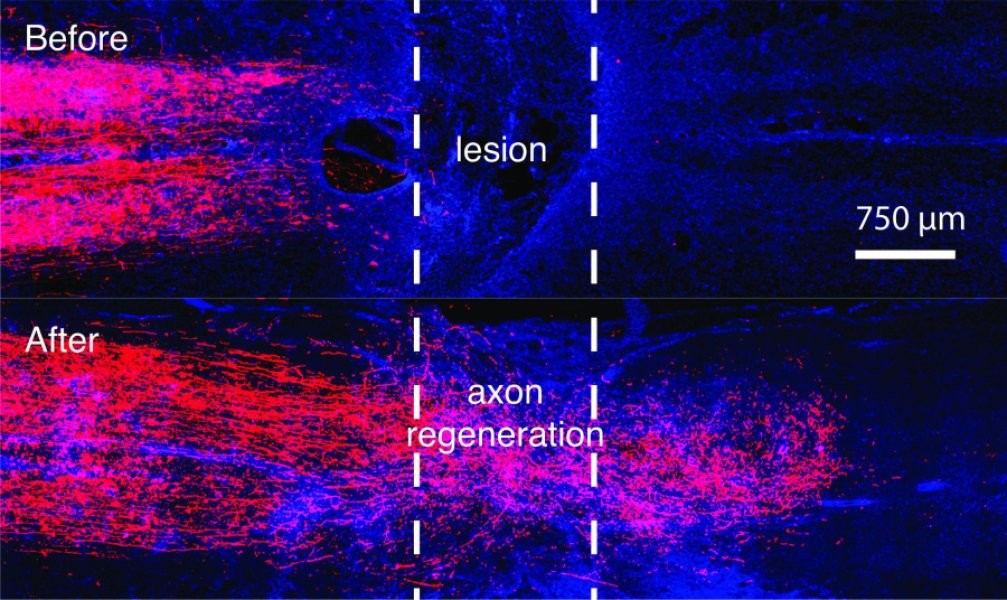
Nerve fibres. Credit: © 2018 EPFL
Air Pollution Leads To Cardiovascular Diseases
August 22, 2018: Johannes Gutenberg Universitaet Mainz
Air pollution, and fine dust in particular, is responsible for more than four million deaths each year. Almost 60 per cent of deaths occur as a result of cardiovascular diseases. Scientists around Professor Thomas Münzel, Director of Cardiology I at the Department of Cardiology at the Medical Center of Johannes Gutenberg University Mainz (JGU), reviewed the mechanisms responsible for vascular damage from air pollution together with scientists from the UK and the USA. Their findings have been published in the latest issue of the European Heart Journal.
The large percentage of deaths from cardiovascular disease has prompted an international group of experts from Germany, England, and the USA to analyze the negative effects of air pollution on vascular function in a review article. Key research questions focused on components of air pollution (particulate matter, ozone, nitrogen dioxide, carbon monoxide, and sulfur dioxide) that are particularly damaging to the cardiovascular system and mechanisms that damage the vessels.
"This report in the latest issue of the European Heart Journal is another important contribution from our Working Group on Environment and Cardiovascular Disease. In summary, it can be said that in relation to the vascular damaging effect of air pollution, particulate matter plays a prominent role," commented Professor Thomas Münzel. "We are especially worried about ultrafine dust. These particles have the size of a virus. When ultrafine matter is inhaled, it immediately enters the bloodstream through the lungs, is taken up by the vessels, and causes local inflammation. Ultimately, this causes more atherosclerosis (vascular calcification) and thus leads to more cardiovascular diseases such as myocardial infarction, acute myocardial infarction, heart failure, and cardiac arrhythmias. Of particular interest is the fact that with regard to the much-discussed diesel exhaust emissions, particulate matter and not nitrogen dioxide (NO2), both of which are produced by burning diesel fuel, have a negative effect on vascular function," Münzel continued.
Other participants in the expert group include the particulate matter researcher Professor Sanjay Rajagopalan of the UH Cleveland Medical Center, the vascular researcher and cardiologist Professor John Deanfield of the Institute of Cardiovascular Science at University College London, Professor Andreas Daiber, Head of Molecular Cardiology at the Mainz University Medical Center, and Professor Jos Lelieveld from the Max Planck Institute for Chemistry (MPIC) in Mainz.
"The fine dust particles are chemically formed mainly in the atmosphere from emissions from traffic, industry, and agriculture. In order to achieve low, harmless concentrations, emissions from all these sources need to be reduced," commented Professor Jos Lelieveld.
"In the future, we will work intensively with the Max Planck Institute for Chemistry to investigate the causes of cardiovascular disease caused by air pollution, especially in combination with (flight) noise," added Professor Thomas Münzel.
Thomas Münzel, Tommaso Gori, Sadeer Al-Kindi, John Deanfield, Jos Lelieveld, Andreas Daiber, Sanjay Rajagopalan. Effects of gaseous and solid constituents of air pollution on endothelial function. European Heart Journal, 2018; DOI: 10.1093/eurheartj/ehy481

Fine dust from industry, road and air traffic, and agriculture pollutes the air and leads to cardiovascular diseases. Credit: Copyright Peter Pulkowski, Mainz University Medical Center
Disclaimer: These articles are not intended to provide medical advice, diagnosis or treatment. Views expressed here do not necessarily reflect those of Pittwater Online News or its staff.